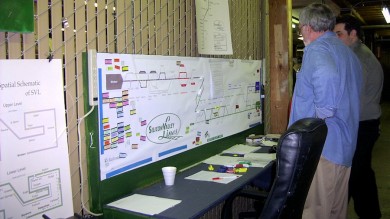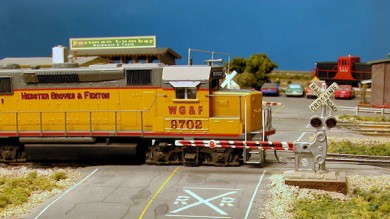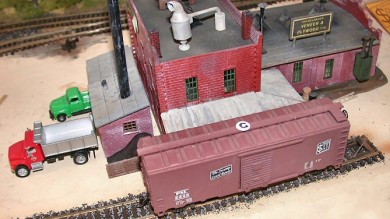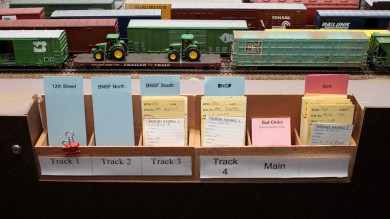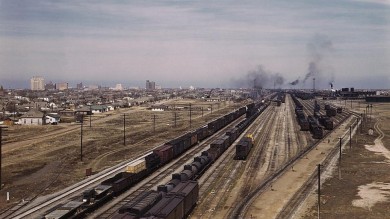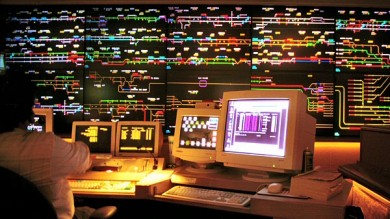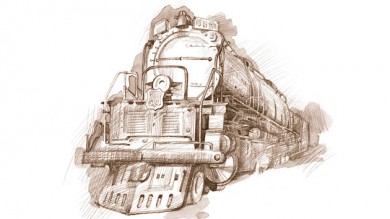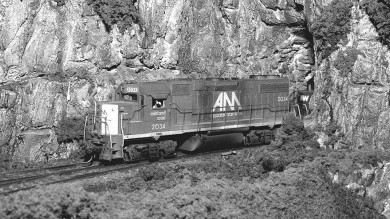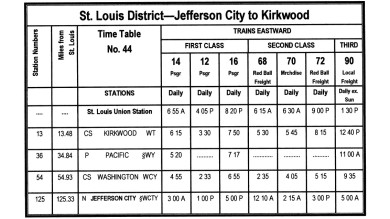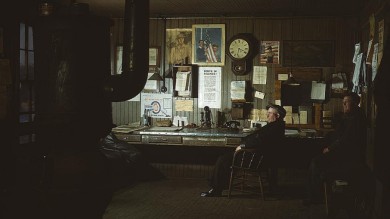Notes on Operations – How Other Folks Do It
Thoughts on model railroad operations from the perspective of learning from others....
Read MoreOperations with a Computer Spreadsheet
Development of model railroad operations and automation assistance using Microsoft Excel....
Read MoreEssence of Model Railroad Operations
Basics of Operations, Car Cards and Waybills for your Model Railroad Layout....
Read MoreCar Card Resources
There are a number of sources for the four-way waybill and car card system Bob discusses in his article, as well as resources and additional information on how to setup your operations....
Read MoreFreight Yards: What Are All Those Tracks?
A major yard facility looks very confusing but there is a purpose behind each and every track within the yard limits and that purpose helps to determine location, access and size for each track....
Read MoreMay 24, 2000
Comments are off
Prototype Yards: Adapting Prototype Operations to Model Railroading
How prototype operations can influence what we do as model railroad operators by examining the operations of prototype yard crews in the time period from 1957 through 1961....
Read MoreUnion Pacific Omaha Harriman Dispatch Center
The Harriman Dispatch Center is within an 1891 Union Pacific freight depot that was converted in the early 1990s to the dispatch center and administrative office housing around 800 employees. Union Pacific dispatchers work in a steel-reinforced concrete bunker within the building. The...
Read MoreOperation Department 3
One way to add operating pleasure to your railroad, and hopefully prevent these types of mistakes, is to copy the actions of the prototype. Real railroads have documents known as a train procedures directory, click book and yard book. These different books were used by the train crews...
Read MoreOperation Department 2
One of the underused resources in the operator's bag of tricks is the use of staging. With this tool, a modeler can simulate bridge traffic, run throughs, junctions, and interchanges. Each of these can add interest and operational possibilities. Successfully done, hidden staging can g...
Read MoreTimetable and Train Order Operation, A Primer
Timetable and Train Order Operation Basics, a primer from the Gateway Division NMRA....
Read MoreDesigning Model Railroad Operations
Modelers enjoy visiting and running on model railroads that are realistic in appearance and operated in a realistic manner. This only happens when the model echoes the mission of a real railroad — cars move to transport freight and passengers....
Read MoreOperation Department 1
Pacing devices, like junctions, seem to be used and thought of more in the planning stages of railroads. They allow operators more prototypical time to complete switching chores as well as provide for longer runs for mainline engineers....
Read MoreCopyright © 2020 Gateway Division NMRA. All rights reserved. | Website Info | Legal Notices

